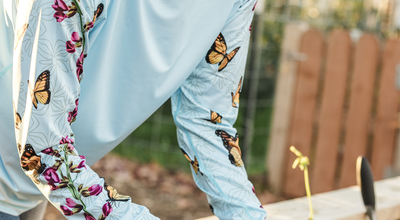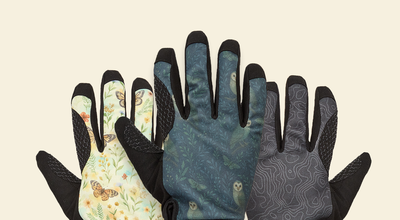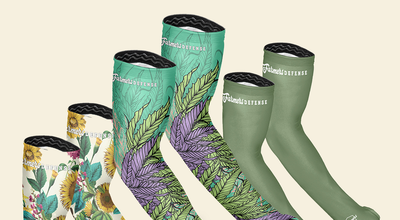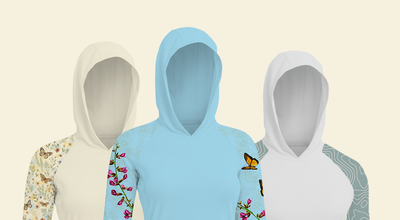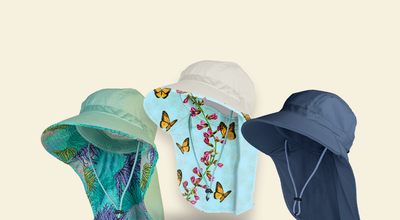Embrace the Sun Safely: Your Ultimate Guide to UPF Apparel
Sunlight is fantastic for growing plants and warming our spirits. There are few things quite as good as basking in those warm spring sun rays after the chilly winter season. But like all good things, there can easily be too much of it. Ultraviolet (UV) rays emitted from the sun can lead to sunburn, premature skin aging, and even skin cancer.
While the risk of sun exposure seems almost unavoidable, it's crucial to protect your skin from harmful UV rays. Discover the protective power of UPF clothing in this essential guide.

Understanding UPF: A Gardener's Best Friend
What is UPF?
UPF, or Ultraviolet Protection Factor, measures how well fabric shields your skin from UV rays. A UPF 50+ rating means the material blocks about 98% of UV rays, offering comprehensive protection against both UVB and UVA rays.
Who Needs UPF Clothing?
Absolutely everyone, especially gardeners. UPF clothing is a critical defense for anyone spending time outdoors, regardless of skin type.

What Does The UPF Rating Really Mean?
All fabrics, in essence, have some level of UPF, but not all fabrics are created equal.
You might think your regular cotton shirt does the job, but did you know it has a UPF of only about 5-7? That's where Farmers Defense Sleeves boast a UPF 50+ rating, making them approximately 600-900% more effective at blocking UV rays than a standard cotton shirt.
Dorie Chevlen, in her NYT Wirecutter article explains that the denser and thicker the fabric, the better. But while thick fabrics may be a viable solution in the short term, working in the garden often requires long stretches of sun exposure. This is where synthetic fabrics really shine.

In contrast to thick fabrics, with less breathability—often leaving us sweaty and uncomfortable. Synthetics like polyester and nylon blends allow the same protection, or greater, in a lightweight, moisture-wicking material.
All Farmers Defense Sleeves and Sun Hats are made with REPREVE® recycled material made from recycled plastic bottles.
Choosing the Best UPF Fabrics
The Stars of UPF Materials
Synthetic fabrics like nylon and polyester excel in UPF protection. They're durable, lightweight, and provide consistent shielding from the sun.
Colors and UPF Ratings
Darker and brighter colors enhance UV absorption, offering better protection. Lighter hues are less effective in blocking UV rays.
Maintaining UPF Effectiveness
Wetness, wear, and stretch can reduce a fabric's UPF rating. Proper care and choosing durable materials like polyester help maintain their protective qualities.
Broadening Your Sun Protection Strategy
More Than Clothes
Complement your UPF apparel with UV-blocking sunglasses, wide-brimmed hats, and sunscreen for exposed skin areas. Remember to reapply sunscreen every two hours.

UPF vs. SPF: Understanding the Difference
UPF and Fabric
UPF indicates the UV radiation level that reaches your skin through fabric. It provides a comprehensive shield against both UVA and UVB rays.
SPF and Skin
SPF, or Sun Protection Factor, is related to sunscreen and mainly protects against UVB rays. It requires regular reapplication for effective protection.
Studies suggest that if it typically takes you 15 minutes to burn without sunscreen and you apply an SPF 10, it will take ten times longer (2.5 hours) to burn in the sun.
While this is heavily researched and studied science, there are many variables at play, so keeping a high level of SPF on with regular reapplications would be the best bet.
The Importance of Skin Protection in Gardening
The Cumulative Effect of Sunburns
Repeated sun exposure and sunburns can lead to serious skin issues and heightened allergy reactions. UPF clothing offers a continuous barrier against these risks.
Sun Protection: Beyond the Clothing
Having a wide range of defenses against the sun is the safest bet when digging in the garden. To combine sunglasses with UV protection, wide-brimmed hats, UPF clothing, and sunscreen applied where fabrics can’t cover is essential.
While UPF clothing ranks better in protection, there’s still the need for sunscreen where clothing often doesn’t reach.
Your Sun-Safe Gardening Partners at Farmers Defense
Our UPF Gardening Gear
Explore our range of UPF clothing, including protective sleeves, gloves, and neck gaiters, tailored for gardeners. Our products ensure comfort, style, and unrivaled sun protection.
Join the Sun-Smart Gardening Community
With Farmers Defense UPF apparel, you're equipped to enjoy gardening without worrying about sun damage. Protect yourself and nurture your garden under the sun safely and stylishly!


